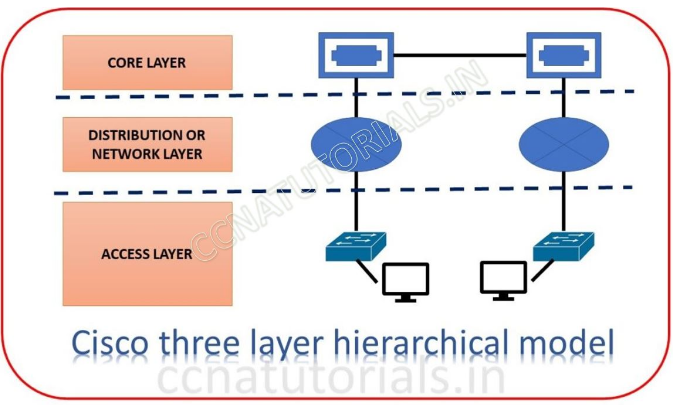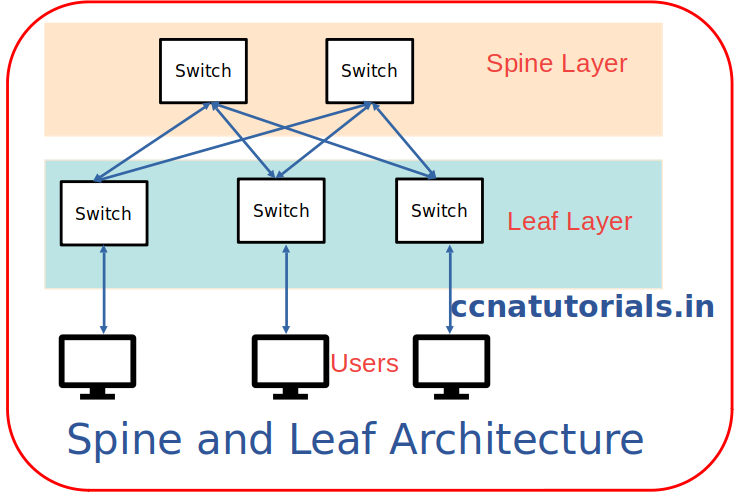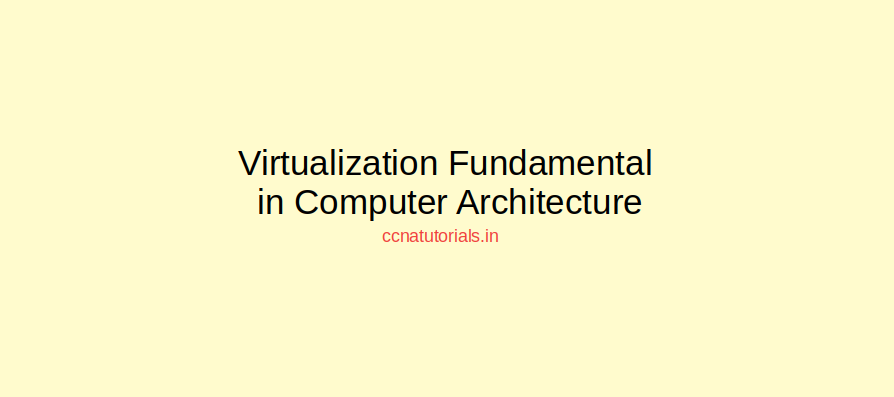Contents of this article
In this article I describe the Spine and Leaf architecture of Cisco networking. Spine and Leaf architecture is the latest technology of DATA Center layout. Before Spine and Leaf architecture Cisco follow its own three layered hierarchical model. So before going to Spine and Leaf architecture in details lets rewind the three layered hierarchical topology of Cisco Data Center layout.
Cisco three layered hierarchical model in computer network followed by Cisco manufacturer to provide the compatibility among the various hardware of Cisco. There are many manufacturer of computer machine in the market. Initially When computers became single user public computer. The computers communicate with only same brand machines. It happens because there was no any fix standard for data transfer between different devices. It is very difficult to make communication with each other when the hardware are of different brands or company.
OSI reference model in computer network followed by various vendors to overcome this problem. After implementation of OSI reference model in computer network, equality maintains by all manufacturer. In 1970 the Open Systems Interconnection (OSI) reference model was created by the International Organization for Standardization (ISO). The OSI model was meant to create inter-operable network with different manufactured devices. In this article I describe all layered approach of Cisco three layered hierarchical model in computer network. Before understanding the Cisco three layered hierarchical model it is necessary to know about the 7 layers of OSI reference model because the basic work of each layer is described in the OSI reference model. So in this article i describe both the OSI model and Cisco three layered hierarchical model.
Not only hardware, software also not supported for work the different computer brand. It became very difficult for all computer users to working without implementation of OSI reference model in computer network. It is necessary then to make some common protocols for all vendors of computer. Before implementation of OSI reference model in computer network, all vendors implements their own protocols on computer hardware and software.
The Layered Approach in computer network.
The Layered approach was the best way to make equality for all computer devices. Layers are not physical but following some protocols. Protocols are for connectivity, connections, data transfer and more. All manufacturer begin to follow the layered approach for OSI reference model in computer network. The OSI reference model change in TCP/IP reference model and later on Cisco three layered hierarchical model. OSI layer architecture have 7 layers. TCP/IP reference model convert these 7 layers into only four layers. After that Cisco three layered hierarchical model converts these 7 layers into three layers. Some layers combined to work in a single layer.
Cisco three layered hierarchical model
Cisco used three layers Core, Distribution/Network and Access layer in three layered hierarchical model. These three layers are logical not physical layers. This three layered hierarchical model combines the 7 layers of OSI model into three layers. The function of each layer is different. The Three layered hierarchical model make it easy to create and maintain a big network. All layers handles the networking protocol in a manner to avoid the data loss. Lets discuss about these three layers in detail.

Core Layer
Core layer is the top most layer of three layered hierarchical model. The main aim of this layer is to transport the data from one network to another network. Data processing is not done at Core layer. The speed and reliability of data transfer in a big network is depends on the core layer. Some technology used at core layer are FDDI, Fast/Gigabit Ethernet and ATM.
Distribution Layer
The function of distribution layer is similar to the network layer in the OSI model. So the routing is processes at distribution layer. Many routing protocols functions at distribution layer like RIP, OSPF etc. The main task of distribution layer are Routing, Access list, Packet filtering, security policy implement and address translation etc.
Access Layer
Access layer provides connectivity to the users. Access layer creates collision domain for the users. Access layer provides connectivity to the devices with the network via Ethernet, WAP etc.
Spine and Leaf architecture Cisco
So after learning something about the Cisco three layered hierarchical model lets see the Spine and Leaf architecture Cisco. Actually Spine and Leaf architecture is implemented for very big networks. In this architecture the three layers combines for two layers only namely Spine and Leaf. The technology growing day by day when we think from beginning 7 layers of OSI converted to 4 layers of TCP/IP model then 3 layers of Cisco and now 2 Layers Spine and Leaf only. The function of 7 OSI layers done withing new 2 layers Spine and Leaf.

The Spine and Leaf are layers of switches which functions differently from each other. Spine layer works like back bone for the network while the Leaf layer provides connectivity to the end users. Spine layer is combination of Core and Distribution layer.
Leaf switches connects with the spine switches in the mesh topology. Means each Leaf switch connected with each spine switch. This provides the reliability and speed for the data transfer in the network. The Spine and Leaf architecture provides a fast and efficient communication between the devices in a Data Center. All routes are configured in an active state through the use of Equal Cost Multipathing (ECMP).
Advantages and Disadvantages of Spine and Leaf architecture
The main advantage of Spine Leaf architecture is the data flow speed increased. Each leaf switch connected with each spine switch so the chances of communication failure is very minimum. There is no need of STP configuration in Spine- Leaf architecture network. Which provides a very stable environment in the data center. The expansion of hardware in data center become easy and reliable. You need only add a spine switch for expansion of hardware in the data center.
There is a problem with this Spine- Leaf architecture that it needs a lots of cable for connectivity of spline and leaf switches. VLAN connectivity between leaf switches is eliminated so different switches can not connect with the VLAN of different Leaf switches.
I hope you found this article helpful about spine and leaf architecture of Cisco. For any query or suggestion on this topic you may contact us or drop a comment below. Your suggestions are always welcome by us.






